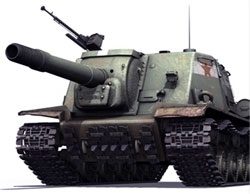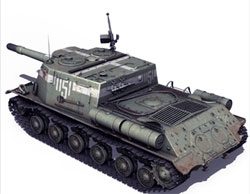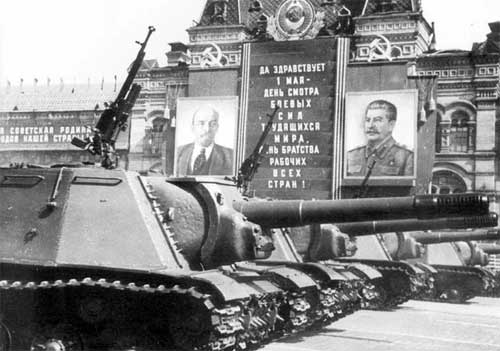
Heavy self-propelled artillery installation ISU-152
Heavy self-propelled artillery installation ISU-152
Like the SU-152, the new self-propelled artillery mount has a howitzer cannon displaced to the right in the conning tower located in front of the chassis. The forward recoil devices of the gun are covered with a massive armored mask. A turret mount of a large-caliber anti-aircraft machine gun was mounted on the roof of the conning tower. The SPG used a 10P or 10RK radio station and a TPU-4BisF tank intercom. To control the fire, telescopic and artillery panoramic sights were used, which provided firing both with direct fire and from closed positions. The installation commander monitored the battlefield using a periscope, the driver-mechanic located to the left of the gun had his own observation devices.
From the memoirs of N. M. SinevNikolai Mikhailovich SINEV – Doctor of Technical Sciences, Professor, laureate of the Lenin and State Prizes of the USSR. During the Great Patriotic War, he worked as deputy chief designer of a tank design bureau headed by Zh. Ya. Kotin. Under the leadership of Kotin, shortly before the war, one of the best heavy tanks, the KV, was created, and in 1942-1945 more advanced heavy IS tanks, as well as several series of self-propelled artillery mounts based on the KV and IS. “At the end of 1942, during one of the military operations in the area of Neva Dubrovka, our troops captured the newest heavy tank of the Wehrmacht “Tiger”. During the night, the trophy was transported to the right bank of the Neva, and then to the rear. Soon after that, the designer of Soviet heavy tanks, Zh. Ya. Kotin, in whose design bureau I then worked, received an order to send several specialists to Leningrad to study the design of the "Tiger" and its tactical and technical characteristics. This was entrusted to the Deputy Chief Designer A.S. Ermolaev and two prominent employees of the Design Bureau. And on one of the January days of 1943, at 10 o'clock in the evening, Kotin unexpectedly gathered all his "guards": deputies, several heads of leading design teams and pilot production leaders. Kotin, Deputy Chairman of the Council of People's Commissars, People's Commissar for Tank Industry V. A. Malyshev, and Ya. N. Fedorenko, commander of the armored and mechanized troops of the Red Army, entered the room where about 15 people were sitting. Malyshev said: the appearance of Hitler’s heavy tanks “Tiger” at the front gives reason to believe that, in preparation for the summer campaign, the enemy has already begun to equip strike units with such vehicles that are capable of not only resisting our T-34 and KV, but also surpassing them in fire relics. Of particular importance, the People's Commissar emphasized, is the armament of the Tiger, an 88-mm cannon with an initial projectile velocity of more than 800 m / s, enhanced armor, high specific engine power and maneuverability. - What are we going to do, comrade designers?, - the people's commissar addressed those present, - our new heavy tank IS is not yet ready for serial production, its 122-mm gun is still being worked out by F.F. Petrov. We apparently have only one way out, by the way, approved by the Supreme High Command - to take up the creation of powerful self-propelled artillery mounts based on the KV-1S, equipped with guns that are already in mass production. At that time, the KV-1S was produced in Tankograd, a modernized version of the well-known heavy tank that entered service before the war. The essence of the modernization was the introduction of an eight-speed gearbox (lead developer N. F. Shashmurin) and a planetary turning mechanism, by the way, for the first time in our country (the lead developer is Lieutenant Colonel A. I. Blagonravov, teacher at the Military Academy of Armored Forces). On the KV-1S, new units of the engine cooling system of a slightly increased power were installed. However, the armament of the tank remained the same - a 76-mm cannon with an initial projectile velocity of 660 m/s. The day after the meeting, Kotin, together with two specialists from the design bureau, flew to the artillery plant, and a day later he called me: - I will be delayed for another 2-3 days, I am shipping a 152-mm howitzer. And don't waste your time, start working on how to equip it with armor so that the fixed turret superstructure of the self-propelled gun does not go beyond the size of the KV-1S! The howitzer arrived at the plant the next day. They dragged me into the mechanical assembly shop, called there designers, artillery-tower-makers, experienced model designers. According to the sketch drawings, they immediately began to build an imitation of the hull from plywood around the howitzer standing on the pedestal, taking into account the thickness of the walls. It turned out to be the most difficult to provide the space inside the turret necessary for the large (1 m) recoil of the gun. Later, using the experience of developing a muzzle brake for a 122-mm cannon, they decided to reduce the rollback by using a similar device on the new ACS. However, at the same time, it was necessary to move the gun barrel forward, pushing its heavy support, swinging armor (mask) forward with a protrusion, while ensuring good balancing of the entire moving system. ... By the return of Kotin, the main question - whether the howitzer fits into the dimensions of the KV-1S or not - was decided positively. It seemed that it would even be possible to place two dozen 49-kg high-explosive shells inside the self-propelled gun. By the end of January 1943, the prototype SAU-152 was ready for sea and artillery trials. Clear, frosty day. The self-propelled gun left the factory gate and stopped in a sand pit. Shot with a blank from a distance of 80 m. Unexpectedly loud. The car jerked, crouched slightly and rolled back almost a meter. The chief engineer of the plant, E. M. Maidelman, reacted unusually to what was happening - he fell into the snow. The self-propelled gun was carefully examined. Everything is in order, only a few balancers of the rollers have reached the stop. But now the most important thing has begun, because none of the representatives of the Main Artillery Directorate knew what the trajectory of a heavy high-explosive fragmentation or armor-piercing projectile would be when firing direct fire. The fact is that all the verified firing tables for the 152-mm howitzer were drawn up only for mounted fire. Our doubts could only be resolved at the test site. Arrived. Frost around 30°C. We started firing blanks at plywood shields with a side of 2 m. Distance 500 m - hit. 800 m - hit. 1000 m - hit! 1200 m - "Hurrah!". This means that our self-propelled guns are capable of suppressing the pillboxes and bunkers of the enemy and shooting his tanks at a considerable distance. It should also be taken into account that at the test site, the testers used rather primitive aiming devices, and the artillery preparation of the calculation left much to be desired. It should be noted that the designers, testers, workers of the workshops of the pilot plant then worked two shifts in a row, or even around the clock. On this occasion, the family joked gloomily: “Well, spend the night at work, it’s only better for us - after all, but more spacious ...” Indeed, at that time, hundreds of thousands of evacuees concentrated in Chelyabinsk, who sometimes had to be accommodated even in kitchens, and in living rooms housed two or three families. ... In parallel with the tests of the SAU-152, we were developing working documentation, coordinating it with the technologists. Since February 1943, the production of serial bodies, units and parts began, and in March the first vehicles were assembled, which immediately went to the front. The experience of the combat use of the SAU-152 posed new problems for us. In particular, it was necessary to somehow provide anti-aircraft protection for the columns of self-propelled guns on the march. Having considered several options, we proposed installing 12,7-mm machine guns on the roofs of the commander's hatches, and in just two weeks we developed the necessary blueprints. Then I had to work on improving the autonomous ventilation system of the fighting compartment. A significant role in the success of this work was played by a group of aerodynamicists of the Leningrad Polytechnic Institute, headed by Associate Professor A.F. Lesokhin, who, after the evacuation, was included in the experimental department of our pilot plant. With their help, it was possible to increase the productivity of the ventilation system by almost 3 times, which cleans the fighting compartment from powder gases. So, day after day, constantly taking into account the wishes of the front-line soldiers, the home front workers improved self-propelled guns that smashed the Nazi "tigers", "panthers" and other armored beasts on the front line ... ... In mid-July 1943, in the midst of fierce fighting on the Kursk Bulge, the Headquarters ordered to deliver samples of new equipment to Moscow by August 1 to show the Supreme Commander-in-Chief. Then the State Defense Committee had to decide on the mass production of a heavy tank IS and created on its basis ISU-152 self-propelled guns... It must be said that several hundred SAU-152 (based on KV-1S) and Uralmash SAU-100 (100-mm cannon on T-34 chassis) have already successfully shown themselves in the Belgorod-Kursk direction. In those days, the outcome of the battle on the Kursk Bulge was already obvious, but Victory was still far away, and the concern of the Supreme High Command for further strengthening the offensive power of our army was quite understandable. I remember that late at night Kotin called me to the plant and informed me that a decision had been made on the composition of the train sent to Moscow. I was to lead it. Two IS tanks (with 122-mm and 152-mm guns) should have been placed on six railway platforms, ISUs are 152-mm howitzers, a self-propelled gun with a 122-mm cannon, also created on the basis of the IC, and two SAU-100, developed by Uralmash on the basis of the T-34. I had to immediately begin the formation of crews and the preparation of the materiel. We included in the echelon a freight car with diesel fuel, lubricants, spare parts (including V-2 diesel), tools and equipment, and a passenger car for our team of 28 people. The crew of each vehicle consisted of experienced test drivers, mechanics, transmission operators and a lead test engineer who served as commander. Our special-purpose tank echelon arrived in Moscow along the green street, without delay, on July 31 and unloaded at Cherkizovo. Several days passed. The crews lived in the cabins of the evacuated plant in the barracks position. From time to time we were visited by representatives of the Office of Armored Forces, the Academy of Armored and Mechanized Forces, heads of the People's Commissariats of the tank industry and weapons. I remember the night visit of the People's Commissar of Armaments DF Ustinov. Dressed in overalls, he climbed inside the vehicles, inquiringly examined the fighting compartments, and questioned the crews in detail. The drug addict was then 35 years old, and he amazed us with his energy and excellent knowledge of military technology. In August, Moscow was lit up with volleys of the very first salute. How much joy Muscovites had and we, the Urals, who heard and saw these bright signals of the coming Victory! On August 7, Kotin told me that by the decision of the GKO, IS tanks and self-propelled guns based on them were being put into service, so the drawings had to be urgently corrected and something in the design had to be improved. After that, it was necessary to manufacture two improved tanks in 2-3 weeks, which were assigned the IS-2 index. Today, Kotin urgently flies to Chelyabinsk, and I am entrusted with demonstrating equipment in the Kremlin. “So hold on, Nikolai!” He ended the conversation with his characteristic mischievous smile. The next day I was summoned to the people's commissariat and ordered by phone to announce to the detachment "readiness number one." I was warned that when the column passed to the Kremlin, it would be met by Malyshev, from whom we would receive instructions. After 15 minutes, I was already among the excited comrades who managed to take the machines out of the workshop and build them in the factory yard. We left the semi-desert Cherkizovo, deciding to head along Rusakovskaya Street, then turn onto Krasnoselskaya, move along Maroseyka to the Kremlin. Not far from Razgulyai, Malyshev met us in a Ford and ordered us to go to the Ilyinsky Gate. The entire route I stood on the head IS, holding onto the handrails of the tower and signaling the column with a flag. But ... at Novo-Basmannaya we were stopped by a long horse train, which occupied the middle of the street. And then we had to pause several times, and we were running out of time! I was afraid that out of habit (the ISs were for the first time equipped with a planetary turning mechanism), some of the drivers, wielding not one, but two brakes, would suddenly burn out the mechanism for turning the planetary on and off. It turned out ... And now the tanks and self-propelled guns turned around in front of the building of the Supreme Council. The head IS machine stood opposite the entrance to it. Security officers lined up in front of the cars and behind them. We began to wipe the trunks and towers from dust, but then the command “Attention!” was heard. I. V. Stalin, members of the State Defense Committee, followed by the people's commissar of the tank industry V. A. Malyshev and the commander of the armored and mechanized troops Ya. N. Fedorenko, other representatives of the Supreme High Command, came out of the door. Seeing us, K. E. Voroshilov raised his hand and said quietly: “Greetings to the Kirovites!” Approaching the head IS, Stalin asked Malyshev about the engines of the tanks, about the mileage that the vehicles would pass without repair, about the resource of the tracks (their tanks were then made of less wear-resistant silicon steel). Then, pointing to the long-barreled 122mm cannon, Stalin remarked that this imposing and powerful weapon was suitable for a heavy tank, as opposed to a howitzer, which is good for a heavy self-propelled gun. As I said, an IS with a 152-mm cannon was demonstrated next to the lead vehicle, and the third in a row was ISU-152. Then he went to the ISU-152 and, unexpectedly for everyone, easily climbed onto its corps, with a sharp movement of his hand rejecting an attempt by one of the generals to help. Looking into the commander's hatch, he asked: - And what about the ventilation of the fighting compartment? Test driver Kostya Trifonov was not taken aback: - Comrade Stalin, improved ventilation has been worked out for these self-propelled guns, it has three times the air flow, and the danger of smoke and gassing of the tower with gases from shots is completely excluded! After a 25-minute inspection of the new technology, Stalin emphatically said: “It is on these tanks that we will end the war!”
Back – Forward >> |
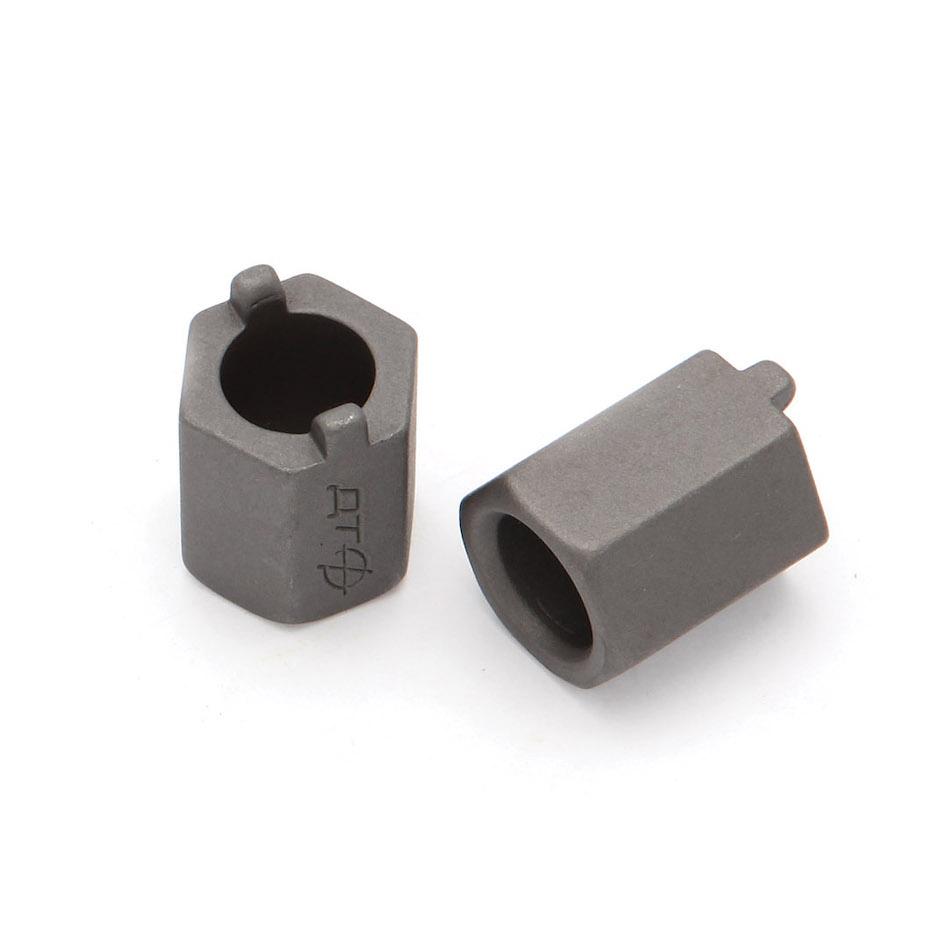

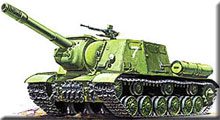 At the end of 1943, in connection with the discontinuation of the KV-1S tank, on the basis of which the heavy SU-152 was produced, the question arose of continuing the production of heavy self-propelled guns with a 152,4-mm howitzer gun based on the new heavy tank IS-1. Taking into account the experience gained in the creation and production of the SU-152, a new self-propelled gun was created in a very short time, and by the end of 1943, new self-propelled guns, called "ISU-152", began to arrive at the front.
At the end of 1943, in connection with the discontinuation of the KV-1S tank, on the basis of which the heavy SU-152 was produced, the question arose of continuing the production of heavy self-propelled guns with a 152,4-mm howitzer gun based on the new heavy tank IS-1. Taking into account the experience gained in the creation and production of the SU-152, a new self-propelled gun was created in a very short time, and by the end of 1943, new self-propelled guns, called "ISU-152", began to arrive at the front.
